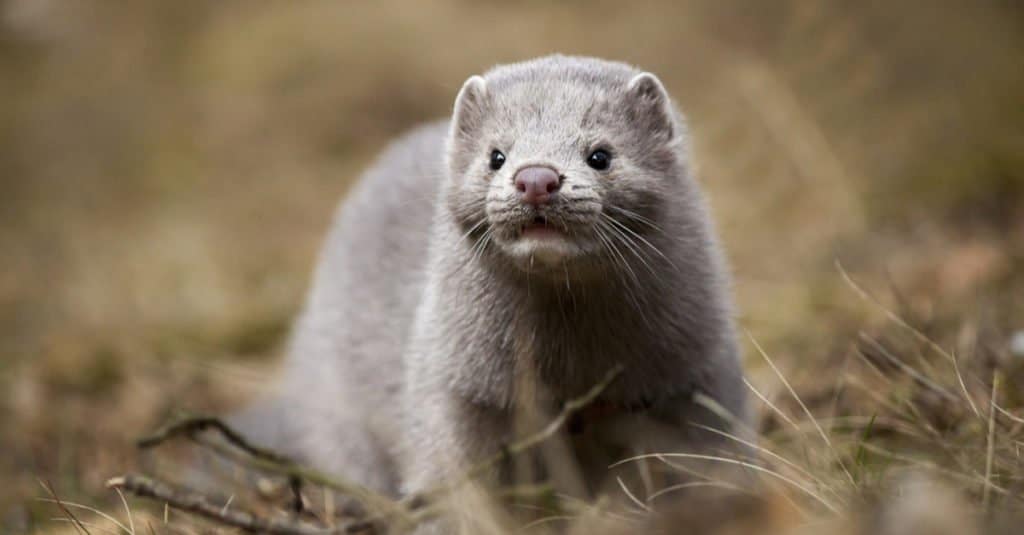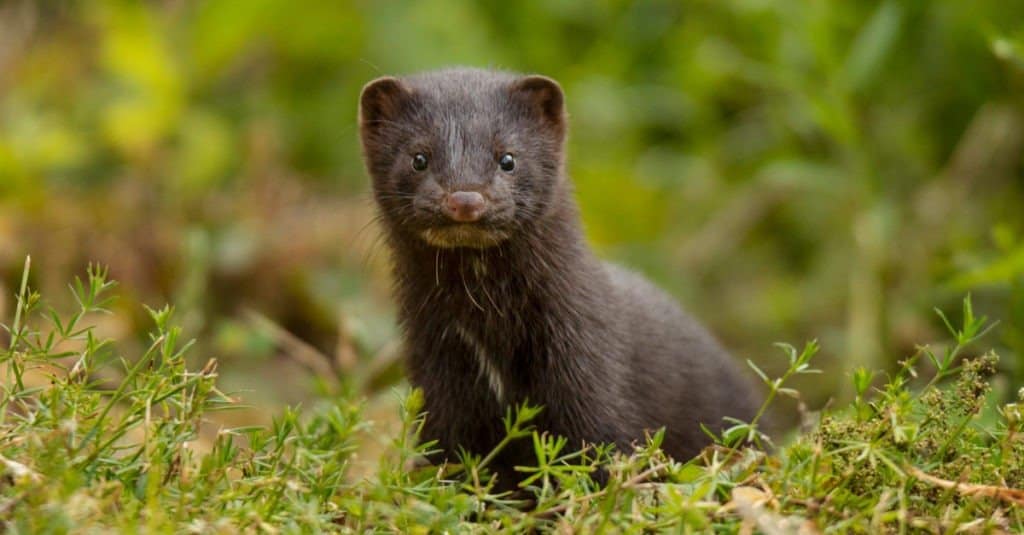What Can I Feed a Mink
Minks are a type of weasel that lives in North America and Europe. Minks have a high metabolism, which means they need to eat frequently. They typically consume one-third of their body weight each day. This diet is necessary to maintain the mink's energy and help it survive in the wild. With this ravenous diet, you might be wondering what minks eat. Let's dive into the diets of these small predators!
What do Minks Eat?

Aleksandra Saveljeva/Shutterstock.com
Minks are mostly carnivorous animals that eat a diet of small rodents, fish, and other small aquatic creatures. They have sharp teeth and a strong jaw that allows them to kill their prey quickly. Minks also eat insects, berries, and other plants on occasion.
Minks typically don't eat animals that are too big because their jaws and teeth aren't made to take down larger animals. If a mink comes upon a large animal, it will most likely eat what it can and leave the rest.
If food is scarce around its habitat, a mink might resort to eating eggs if other options aren't available. A mink can eat up to 20% of its body weight in one sitting if food is readily available.
A mink's diet changes based on the time of year and where they live. Here are is a list of foods minks will eat:
- Fish
- Mice
- Other small aquatic creature
- Aquatic vegetation
- Insects
- Berries
- Frogs
- Crustaceans such as crayfish
- Other plants
In an article from the Journal of Zoology, they found that European mink ate a larger proportion of fish and crustaceans, whereas American Mink ate more mammals and frogs.
How Do Minks Hunt for Food?

Aleksandra Saveljeva/Shutterstock.com
Minks are primarily carnivores, meaning they need to consume meat in order to survive. They hunt for their food by seeking out small prey like frogs and crustaceans. Mink's paws are webbed, which gives them an advantage when swimming through the water, looking for food.
Minks also eat rodents, fish, birds, and other mammals that dwell along the shoreline or near lakes or rivers. Once a mink catches its prey, it will shake it violently back and forth against the ground until it dies of suffocation or shock. If you see a mink kill something, you should never try to intervene because minks can be very aggressive at this point and may attack you if provoked.
The long teeth of minks help them rip through the tough flesh of their prey in order to get to the meat inside. If you have ever seen a mink or its face close up, then you will notice that they have an underbite that causes their lower jaw to protrude forward. This helps minks tear off chunks of meat when feeding.
What Animals Compete with Minks for Food?
Minks often feed on aquatic animals which can put them into competition with other animals ranging from alligators to otters.
For example, American minks have a range that extends from Alaska to Florida. In southern environment they must compete with reptiles that prefer the same aquatic hunting grounds like snakes and alligators. In more northern environments minks will compete with predators such as coyotes, bobcats, and other predators that feast on rodents, birds, and small lizards and amphibians.
Are Minks Dangerous to Humans?
Minks are shy and elusive animals that can be found in various parts of the world, such as North America and Europe. While they may seem harmless at first glance, these creatures have a reputation for being aggressive towards humans.
However, it is important to note that most mink attacks on humans happen when people attempt to handle them or make contact with their habitats. Mink bites can cause serious injuries and should not be taken lightly.
Are Minks Kept as Pets?

Minks are kept as pets by some people. They are mostly kept in outdoor cages but can also be kept in indoor cages if they have access to an outdoor area. When Minks are kept as pets, their diet can include a lot of fresh meat and fish. They need a lot of water to stay healthy and should be out for at least an hour every day.
What do Minks Eat in Captivity?
Most zoos feed their minks a diet of ground meat, cornmeal, and hard-boiled eggs.
In the wild, minks eat a diverse range of foods in their natural habitats that include rodents, snails, crabs, and insects. In captivity, however, they are fed a diet that is high in protein which makes them healthy but can make them aggressive due to their high content of animal fats.
Source: https://a-z-animals.com/blog/what-do-minks-eat-their-diet-explained/#:~:text=Minks%20eat%20fish%2C%20rodents%2C%20and%20crustaceans.&text=Minks%20are%20mostly%20carnivorous%20animals,and%20other%20plants%20on%20occasion.